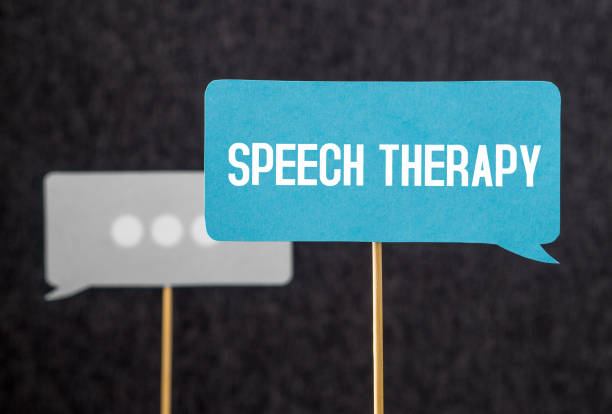Health
Here Are Tips On How To Get Rid Of A Lisp

A lisp is a speech impediment that affects the pronunciation of the “s” and “z” sounds, typically characterized by the tongue pushing against the teeth or protruding between the teeth.
While it may be challenging, with dedication and practice, it’s possible to reduce or eliminate a lisp.
Let’s explore effective methods for addressing this issue.
1. Seek Professional Evaluation: First and foremost, it’s essential to consult with a speech-language pathologist (SLP) or a speech therapist to receive a thorough evaluation and personalized guidance. They can determine the specific type of lisp (interdental, lateral, dentalized, or palatal) and provide tailored strategies to address the lisp effectively.
2. Practice Correct Tongue Placement: Learning to position the tongue correctly during speech is crucial for correcting a lisp. The goal is to train the tongue to rest behind the front teeth instead of protruding or pushing against them. Practice exercises that focus on tongue placement and muscle control to gradually retrain the tongue’s positioning.
3. Speech Exercises: Engage in targeted speech exercises to strengthen the muscles involved in producing clear “s” and “z” sounds. These exercises can include repeating specific words and phrases, exaggerating the correct pronunciation, and gradually increasing the complexity of speech patterns to reinforce proper articulation.
4. Focus on Breathing and Airflow: Improving breath support and airflow is integral to refining speech clarity. Practice diaphragmatic breathing techniques to support sustained and controlled airflow, aiding in the production of clear and consistent speech sounds.
5. Visualization Techniques:Use visualization techniques to create mental images of proper tongue placement and airflow during speech. Imagining the correct positioning and articulation can help reinforce muscle memory and improve the accuracy of speech production.
6. Record and Analyze Speech: Utilize audio recording to monitor and analyze your speech patterns. Listening to your recorded speech allows for self-assessment and identification of areas needing improvement. Additionally, it provides an opportunity to track progress over time.
7. Seek Continuous Support and Feedback: Consistent support and feedback from a speech therapist, as well as family and friends, are invaluable for maintaining motivation and receiving constructive input on speech improvement. Regular practice and feedback aid in refining speech habits and fostering continued progress.
8. Patience and Persistence : Overcoming a lisp requires patience, persistence, and dedication. It’s a gradual process that may take time to yield noticeable improvements. Remain patient with yourself and stay committed to the practice and exercises recommended by the speech therapist.
9. Utilize Visual and Tactile Cues: Visual and tactile cues can aid in reinforcing correct tongue placement and articulation. Utilize mirrors to observe tongue positioning and provide gentle tactile cues to ensure the tongue remains behind the front teeth while producing “s” and “z” sounds.
10. Incorporate Speech Tools and Props: Speech tools and props, such as articulation cards, therapy putty, and straw exercises, can be beneficial for engaging the muscles involved in speech production. These tools offer tactile feedback and can facilitate targeted practice to enhance speech clarity.
11. Contextual Practice: Practice speech in various contexts and settings, such as casual conversations, public speaking, and reading aloud, to transfer newly acquired speech patterns into real-life situations. Regular practice in diverse contexts contributes to the integration of improved speech habits.
12. Celebrate Progress: Acknowledge and celebrate incremental progress along the way. Recognizing and celebrating even small improvements can boost confidence and motivation, reinforcing the commitment to ongoing speech improvement.
13. Address Underlying Factors: In some cases, underlying factors such as dental issues or oral habits may contribute to a lisp. Addressing these underlying factors, including seeking orthodontic intervention or addressing mouth-breathing habits, may complement speech therapy efforts.
Remember, individuals progress at varying rates, and the effectiveness of lisp correction methods can vary based on individual factors. It’s essential to approach the journey to improving speech clarity with patience, perseverance, and a positive mindset.
Seeking professional guidance and personalized support from a speech-language pathologist remains essential throughout the process. They will provide tailored strategies and support to address the specific type and severity of the lisp, empowering individuals to achieve improved speech clarity and communication.
-

 Breaking News3 years ago
Breaking News3 years agoBREAKING: CBN Redesigns Naira Notes
-

 Breaking News2 years ago
Breaking News2 years agoBREAKING: Tinubu Considers Temporary Subsidy On Petrol
-

 Breaking News2 years ago
Breaking News2 years agoJUST IN: Gbajabiamila Dies In UK
-

 News3 years ago
News3 years agoDrama As Church Gives Certificate Of Virginity To Ladies After Testing Them (See Photos)
-

 Crime4 years ago
Crime4 years agoUproar As Student Teacher On Teaching Practice Impregnates 24 Girls, Headmistress, Four Female Teachers
-

 Breaking News10 months ago
Breaking News10 months agoJUST IN : Sacked Osun LG Chairman Killed Few Minutes After Returning To Office
-

 Breaking News2 years ago
Breaking News2 years agoBREAKING: Dangote Speaks As BUA Reduces Price Of Cement
-

 Crime3 years ago
Crime3 years agoJUST IN: Gunmen Storm Osogbo, Kill Man, Daughter Few Hours After His Wife Put To Bed (Photos)
